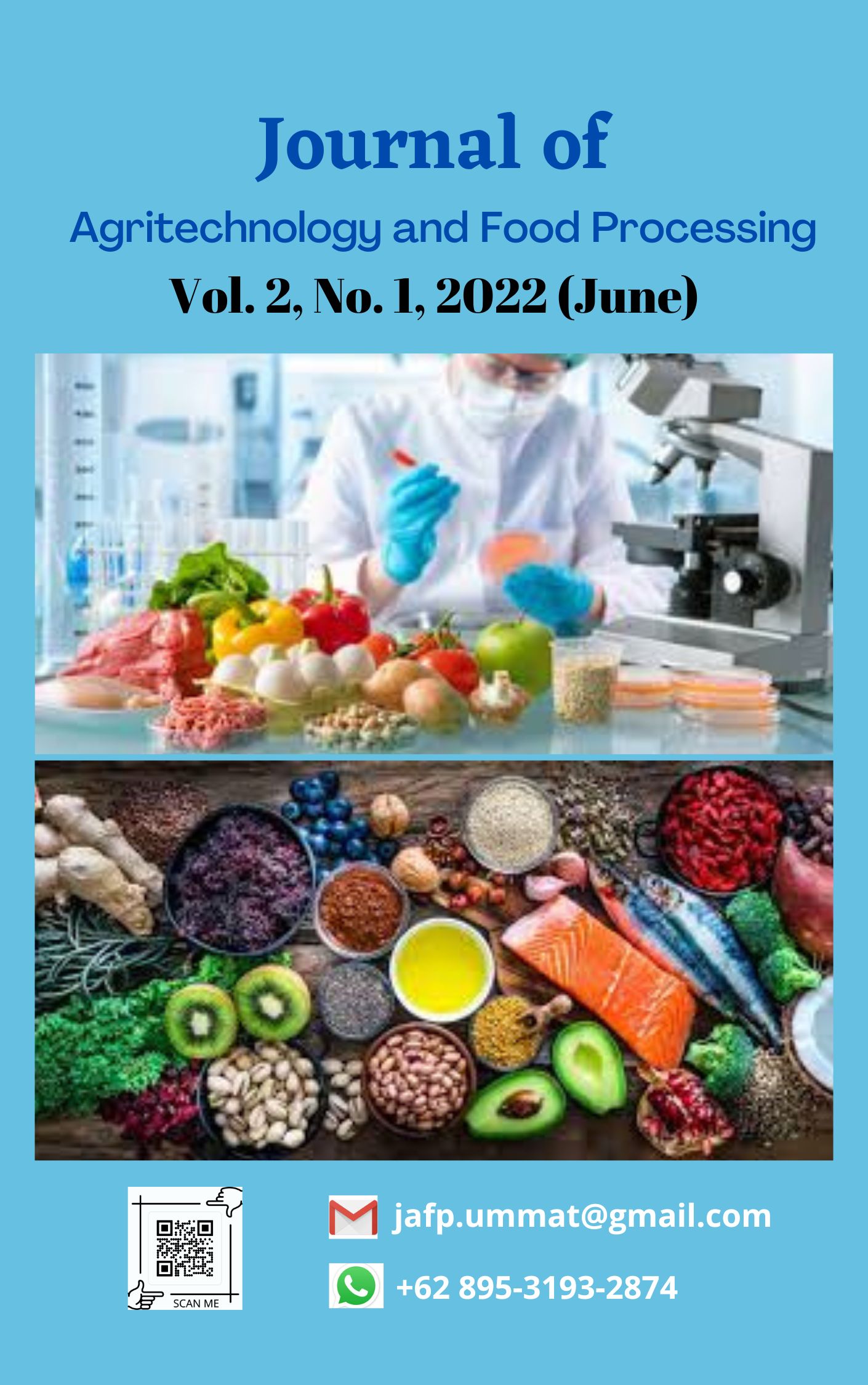Pengaruh kombinasi tepung terigu dan jamur tiram (Pleurotus ostreatus) terhadap sifat organoleptik nugget
DOI:
https://doi.org/10.31764/jafp.v2i1.8940Keywords:
combination, nugget, oyster mushroom, flourAbstract
A nugget is a processed product of ground beef which is added to a binder and mixed with spices and then covered with egg white (batter) and breaded flour (breading), which is then packaged before being fried and frozen to maintain quality. Many raw materials were used in its development, including oyster mushrooms (Pleurotus ostreatus). Oyster mushrooms contain high fiber in contrast to chicken or beef, which have low fiber, and oyster mushrooms also have a texture and taste similar to chicken meat. High fat content and low fiber in chicken or beef are not recommended for people who are obese or hypercholesterolemic, so oyster mushrooms are a good choice as an ingredient for making nuggets. The combination of wheat flour and oyster mushroom has an effect on the organoleptic properties of the taste, aroma, and texture of the nuggets. The making of nuggets with a combination of wheat flour and oyster mushrooms was acceptable organically, and the panelists gave the impression of liking it for all organoleptic criteria. The average result of the best organoleptic test assessment in this study was the N5 treatment, namely 60% wheat flour and 40% oyster mushroom with organoleptic characteristics of taste, aroma and texture favored by the panelists.
References
Dianovita, C., dan Gardiarini, P. (2019). Pengaruh formulasi tepung terigu dan daun singkong bubuk terhadap sifat sensoris nugget vegetarian jamur merang (Volvariella volvacea). Politeknik Negeri Balikpapan.
Ketaren, S. (2005). Pengantar Teknologi Minyak dan Lemak Pangan. UI Press.
Laksono, M., Bintoro, V., dan Mulyani, S. (2012). Daya ikat air, kadar air, dan protein nugget ayam yang disubstitusi dengan jamur tiram putih (Pleurotus ostreatus). Animal Agriculture Journal, 1(1), 685–696.
Litbang. (2011). Teknik Mengolah Daging Yang Higienis dan Modern. litbang.pertanian.go.id/download/156/
Mawati, A., Sondakh, E. H., Kalele, J. A., dan Hadju, R. (2017). Kualitas chicken nugget yang difortifikasi dengan tepung kacang kedelai untuk peningkatan serat pangan (dietary fiber). Zootec, 37(2), 464 – 473.
Nirmalia. (2011). Nugget jamur tiram (Pleurotus ostreatus) sebagai alternatif makanan siap saji rendah lemak dan protein serta tinggi serat. Universitas Diponegoro.
Nugraha, B., Iswoyo, dan Sampurno, A. (2019). Sifat fisiokimia dan oganoleptik nugget ayam dengan penambahan jenis tepung yang berbeda. Universitas Semarang.
Purbowati, Maryanto, S., dan Afiatna. (2022). Formulasi nugget jamur tiram sebagai makanan selingan rendah lemak dan tinggi serat. Darussalam Nutrition Journal, 4(1), 44–51.
Rahayu, W. (1998). Diklat penuntun praktikum organoleptik. Institut Pertanian Bogor.
Ratulangi, F., dan Rimbing, S. (2021). Mutu sensoris dan sifat fisik nugget ayam yang ditambahkan tepung ubi jalar ungu (Ipomoea batatas L). Zootec, 14(1), 230–239.
Saragih, W. (2015). Nugget jamur tiram (Pleurotus ostreatus) sebagai alternatif pangan sehat vegetarian. E-Journal WIDYA Kesehatan dan Lingkungan, 1(2), 90–95.
Waseso, W. (2016). Pengaruh proporsi tepung talas (Colocasia esculenta (L.) Schott) terhadap sifat fisikokimia dan organoleptik nugget jamur tiram putih (Pleurotus ostreatus). Universitas Brawijaya.
Downloads
Published
Issue
Section
License
Authors who publish with this journal agree to the following terms:
1. Authors retain copyright and grant the journal right of first publication with the work simultaneously licensed under a Creative Commons Attribution License that allows others to share the work with an acknowledgement of the work's authorship and initial publication in this journal.
2. Authors are able to enter into separate, additional contractual arrangements for the non-exclusive distribution of the journal's published version of the work (e.g., post it to an institutional repository or publish it in a book), with an acknowledgement of its initial publication in this journal.
3. Authors are permitted and encouraged to post their work online (e.g., in institutional repositories or on their website) prior to and during the submission process, as it can lead to productive exchanges, as well as earlier and greater citation of published work (See The Effect of Open Access).

